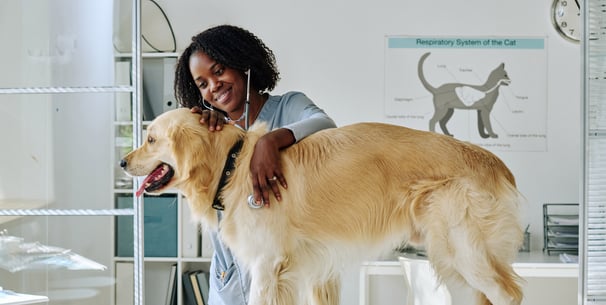How Much Raw Food to Feed a Dog - Helpful Tips
Index:



Introduction
Are you considering switching your furry friend to a raw food diet? Perhaps you're already on the raw feeding journey and want to ensure you're providing the right amount of nutrition.
Understanding how much raw food to feed your dog is crucial for their health and well-being.
In this comprehensive guide, we'll delve into the intricacies of raw feeding and address common questions surrounding this topic.
From calculating the ideal food quantity to navigating the nutritional requirements, we've got you covered. Let's embark on this journey to ensure your canine companion thrives on a balanced, raw diet.
After deciding to explore the raw feeding route for your dog, you might wonder about the broader aspects of raw diets, including safety measures and comprehensive benefits. Our guide on raw dog food can serve as an excellent starting point.



How much raw food to feed a dog
When determining how much raw food to feed your dog, it's essential to consider factors such as their age, weight, activity level and overall health.
As a general guideline, adult dogs typically require between 2% to 3% of their body weight per day of healthy, raw food. For example, a 10kg adult dog may need approximately 200g to 300g of raw food daily.
However, this percentage can vary depending on various factors. Puppies, for instance, may require a higher percentage of their body weight in food to support their growth and development.
Puppies should generally be fed around 5% to 6% of their growing body weight per day.
It's also essential to consider your dog's energy levels and activity levels.
Dogs with higher energy needs may require a slightly higher percentage of their body weight in food to maintain their energy levels and overall health.
It’s also crucial to monitor your dog's weight and adjust their food intake accordingly. If your dog starts to gain or lose weight, you may need to adjust the amount of food you're feeding them to ensure they maintain a healthy weight.
Ultimately, it's best to consult with your veterinarian to determine the appropriate amount of raw food to feed your dog based on their individual needs and circumstances. If you’re already a Waggel member, you can head on over to your account where you can connect with a vet through Joii. Joii offers 24/7 online consultations to help owners gain peace of mind and answers to all of their pet-related questions.
It’s worth noting that some dogs may have allergies or sensitivities to certain foods, which can make navigating a raw diet challenging. For tips on identifying and managing these allergies, check out 'Dog Food Allergies: Symptoms and Diagnosis'.



The importance of a healthy diet for your furry friend
Feeding your dog a healthy diet is crucial for their overall well-being and longevity while maintaining an ideal body weight. When considering a raw diet for your furry friend, it's essential to understand the importance of providing balanced meals that meet their nutritional requirements.
A raw dog food diet typically consists of various components, including raw meat and organ meats. These ingredients are rich sources of protein and essential fatty acids, which are vital for supporting your dog's muscle development, immune function, and coat health.
To ensure your dog receives the necessary nutrients, it's essential to offer a variety of protein sources in their raw meals. This diversity helps prevent nutrient deficiencies and ensures they receive a complete and balanced diet.
When determining the amount of food per day to feed your dog, factors such as their ideal weight, level of activity, and health status should be considered. Puppies, for example, have higher energy needs and may require more frequent meals throughout the day compared to adult dogs.
Dividing your dog's daily food intake into multiple meals per day can help prevent digestive issues and promote better weight control. Additionally, feeding your dog at regular intervals helps maintain their energy levels and supports their metabolism.
It's essential to be mindful of the fat content in your dog's diet, as excessive fat intake can lead to weight gain and other health issues. Opting for lean cuts of meat and incorporating omega-3 fatty acids from sources like fish oil can help maintain a healthy balance of fats in your dog's diet.
Transitioning to a raw feeding regimen is a common sense approach to providing your dog with a natural diet that closely resembles what their ancestors consumed in the wild. However, it's crucial to monitor your dog's digestive health and make adjustments as needed to ensure their diet is well-tolerated.
Consulting with a veterinarian or a nutritionist specialising in diets for dogs can provide valuable guidance tailored to your dog's specific dietary requirements and health needs. By taking a proactive approach to your dog's nutrition, you can help them lead a healthy life filled with vitality and wellness.
Another perk of being a Waggel member is that you can also book free behaviour and nutrition consultations with Heal The Dog, a holistic canine behavioural expert. All consultations take place virtually so you can get the advice you need as soon as possible.



Raw meaty bones
Raw meaty bones (RMB) are another component of a balanced raw diet for dogs. These bones are covered in raw muscle meat and connective tissues, providing valuable nutrients such as calcium, phosphorus and essential fatty acids.
Raw bones serve several purposes in a dog's diet, including promoting dental health by helping to clean teeth and preventing tartar buildup, supporting mental stimulation, alleviating anxiety and providing a source of natural nutrients crucial for overall well-being.
When selecting raw meaty bones for your dog, it's important to choose options that are safe for consumption and appropriate for your dog's size and chewing habits. Poultry bones, such as chicken necks, wings, and backs, are often recommended due to their soft and pliable nature.
Other suitable options may include pork feet, lamb ribs and beef tail bones, among others. It's crucial to avoid cooked bones, as they can splinter and pose a choking hazard or cause gastrointestinal issues.
Feeding raw meaty bones should be done under supervision, especially for dogs new to this type of diet or those with aggressive chewing tendencies. It's also essential to monitor your dog's stool consistency and overall health when introducing raw bones into their diet to ensure they are tolerating them well.
Consulting with a veterinarian or canine nutritionist can provide personalised guidance on incorporating raw meaty bones into your dog's diet safely and effectively.



Conclusion
In conclusion, feeding your dog a balanced raw diet can provide numerous health benefits and contribute to their overall well-being.
As you adapt to your dog's raw food diet, continue exploring various aspects of canine care and health. For insights into enhancing your dog's happiness and well-being, consider reading our article, 'How to Make Your Dog Happy'.
By understanding their nutritional requirements, ideal body weight and level of activity, you can ensure they receive the proper amount of food per day. Whether you're considering transitioning to a raw diet or seeking guidance on portion sizes, it's essential to consult with your veterinarian and approach raw feeding with common sense and careful consideration.
As you embark on the journey of raw feeding, remember that your dog's health and safety should always come first. Ensure you're prepared for any health concerns by securing comprehensive coverage with Waggel Pet Insurance, which can offer support for diet-related issues and beyond.
FAQs
How much raw food should I feed my dog per day?
When determining the appropriate amount of raw food for your dog, it's essential to consider their ideal body weight, level of activity, and health status. As a general guideline, adult dogs typically require between 2% to 3% of their body weight per day of healthy, raw food. For example, a 10kg adult dog may need approximately 200g to 300g of raw food daily.
How many meals per day should I provide on a raw diet?
For most dogs, dividing the daily ration into two meals per day is sufficient. This helps maintain stable energy levels throughout the day and promotes better digestion. However, some dogs may thrive on one large meal or multiple smaller meals. It's essential to monitor your dog's energy levels and adjust their feeding schedule accordingly.
What are the health benefits of a raw food diet for dogs?
A raw food diet offers numerous health benefits for dogs, including improved digestion, healthier skin and coat, better weight management, and increased energy levels. Raw diets provide essential nutrients, including protein sources, omega-3 fatty acids and other vital nutrients, promoting overall well-being.
Understanding potential health risks and how to address them is part of responsible pet ownership. Learn about common conditions and how having a robust pet insurance policy from Waggel can help manage unexpected health issues, as highlighted in our post on 'Most Common Skin Conditions in Dogs'.
Waggel Pet Insurance
Need more help? You're in luck if you're a Waggel Pet Insurance member. Along with our excellent coverage, we offer access to a 24/7 online vet to answer all your sticky questions, especially if you need grooming assistance.
Not a member? Why not get a quote now and cover your furry friend for a range of illnesses, all while enjoying our amazing perks and rewards.
Want more like this?
Get updates from us with helpful info, advice, answers to frequently asked questions and much more.
Index:
Related posts:
Get your quote
Along with our excellent coverage, we offer access to a 24/7 online vet to answer all your sticky questions.





